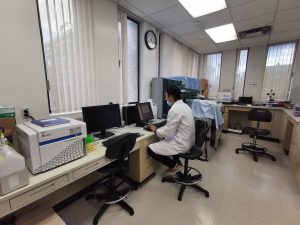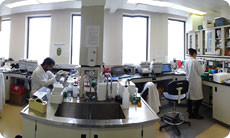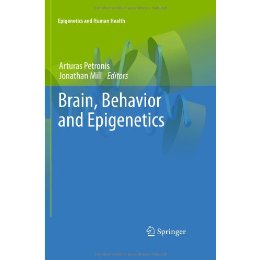
Dr. Liu led research that provided the first direct evidence that two different families of cell receptors directly communicate. Since 50% to 60% of clinical drugs function by targeting these types of receptors, the discovery had important implications for future drug development.
Providing the first direct evidence that two structurally and functionally divergent families of receptors can exert functional cross-talk through direct protein-protein interaction. Our team was the first to discover that a G-protein-coupled receptor (GPCR) can directly modulate the function of a ligand-gated ion channel (LGIC) (Liu et al., 2000 Nature, Lee et al., 2012 Cell). It was thought that GPCRs could only regulate an ion-channel indirectly through phosphorylation. Thus, our findings identified an entirely new type of molecular mechanism for information processing within neurons. Furthermore, both GPCRs and LGICs have great pharmacological importance as demonstrated by the fact that 50-60% of clinical drugs elicit their therapeutic effect by targeting members of the GPCR. Thus, our finding also provided a novel target for therapeutic development.
One of the protein interactions identified by Dr. Liu’s lab involve two well-known dopamine receptors, and the protein complex formed by these receptors is elevated in depression. A small protein peptide that can disrupt this interaction by mimicking the binding site has antidepressant-like effects in animal models and is in the process of drug development.
Development of interfering peptides with antidepressant effect (Pei et al., 2010, Nature Medicine, Brown and Liu 2014 Neuropsychopharmacology). We found that the dopamine D1-D2 receptor complex was significantly increased in postmortem brain of patients suffering from major depression disorder. We developed an interfering peptide that disrupts the D1-D2 complex, and administration of this peptide significantly reduced immobility in the forced swim test and decreased escape failures in learned helplessness tests. Our results may provide a new therapeutic strategy for the treatment of major depression disorder. The peptide is currently licensed to Impel NeuroPharma to further develop this potential new antidepressant.
Another disorder for which this concept of disrupting abnormally-elevated protein interactions has more recently been applied is schizophrenia. In this case, one of the protein is already known to be the main target of existing antipsychotic medications, which binds to another protein known to be involved in severe mental disorders. Blocking the interaction between these proteins has similar effects to antipsychotics in animal experiments, but without some of the side effects that plague current antipsychotic medications.
Development of interfering protein peptides with antipsychotic effect with few side effects (Su et al., 2014 Neuron). Current antipsychotics primarily target D2Rs. However, these drugs have serious side effects such as extrapyramidal symptoms (EPS). We found that the D2R forms a protein complex with DISC1 and the D2R/DISC1 complex level is increased in both post-mortem brain tissue from schizophrenia patients and in Disc1-L100P mutant mice, an animal model of schizophrenia. Administration of an interfering peptide that disrupts the D2R-DISC1 complex successfully reverses behaviors relevant to schizophrenia but does not induce catalepsy, a strong predictor of EPS in humans. Our results demonstrated a novel strategy for drug development—specifically targeting part of the receptor signaling pathway instead of completely shut-down the receptor signaling, thus, achieving therapeutics with higher specificity and fewer side effects.
Multiple sclerosis (MS) is disorder that is especially prevalent in Canada, and it is a somewhat mysterious neurological illness. Current treatments focus on suppressing the immune response against the nerve sheath that leads to symptoms. Dr. Liu has instead pursued a highly novel strategy, which is to block the degeneration of neurons that seems to break the cycle of inflammation and demyelination. This too is based on another protein-protein interaction.
Development of novel therapeutics that can improve neurological function in animal model of multiple sclerosis (MS) (Zhai et al., 2015 Ann Clin Transl Neurol). The pathophysiology of MS remains largely unknown and there is no cure. We have found that protein complex composed of the GluR2 subunit of AMPA receptors and GAPDH is present at significantly higher levels in post-mortem tissue from MS patients and in experimental autoimmune encephalitis (EAE) mice, an animal model for MS. We developed a peptide and small molecules that can specifically disrupt the GluR2-GAPDH complex. Disruption of the GluR2-GAPDH complex greatly improves neurological function in EAE mice. The GluR2-GAPDH complex thus represents a novel target for the development of medications for MS that work through a different mechanism than existing treatments.
PTSD is unusual among psychiatric disorders because it originates from specific known traumatic events. Dr. Liu has exploited this aspect of the illness in designing yet another therapeutic peptide that blocks a part of the stress response pathway in the brain. This peptide could one day be used as an antidote of sorts in trauma victims, with the goal of preventing the later emergence of PTSD.
Identification of the GR-FKBP51 complex that may be a diagnostic biomarker and a potential therapeutic target for preventing or treating PTSD (Li et al., 2020 Journal of Clinical Investigation). Current treatments for PTSD are only partially effective, and development of better treatments is hampered by limited knowledge of molecular mechanisms underlying PTSD. We have discovered that the glucocorticoid receptor (GR) and FK506 binding protein 51 (FKBP51) form a protein complex that is elevated in PTSD patients compared with unaffected control subjects, subjects exposed to trauma without PTSD, and patients with major depressive disorder. The GR-FKBP51 complex is also elevated in fear-conditioned mice, an aversive learning paradigm that models some aspects of PTSD. Both PTSD patients and fear-conditioned mice had decreased GR phosphorylation, decreased nuclear GR, and lower expression of 14-3-3ε, a gene regulated by GR. We created a peptide that disrupts GR-FKBP51 binding and reverses behavioral and molecular changes induced by fear conditioning. This peptide reduces freezing time and increases GR phosphorylation, GR-FKBP52 binding, GR nuclear translocation, and 14-3-3ε expression in fear-conditioned mice.
Selected Papers:
Liu F, Wan Q, Yu XM, Pristupa ZB, Wang YT and Niznik HB Direct protein;protein coupling enables cross-talk between dopamine D5 and-aminobutyric acid A receptor. Nature 403: 274-280 [2000].
Lee FJS, Xue S., Pei L, Vukusic B, Nadege C, Wang YS, Wang YT, Niznik HB, Yu XM and Liu F. The dual nature of dopamine D1 receptor regulation of NMDA receptors through direct protein-protein interactions. Cell 111(2): 219-230 [2002].
Pei L, Lee FJS, Moszczynska A, Vukusic B and Liu F. Recruitment of dopamine D1 receptors to the plasma membrane by direct interactions with NMDA receptors. Journal of Neuroscience 24(5): 1149-1158 [2004]
Zou SW, Li L, Vukusic B, Van Tol HM, Lee FJS, Wan Q and Liu F. Protein-protein coupling/uncoupling enables Dopamine D2 receptors regulate AMPA receptor-mediated excitotoxicity Journal of Neuroscience 25(17): 4385-4395 [2005].
Frank Jang Sup Lee, Lin Pei, Anna Moszczynska, Brian Vukusic, Paul John Fletcher and Fang Liu. Dopamine transporter cell surface localization facilitated by a direct interaction with the dopamine D2 receptor. EMBO J. 26 (8):2127-36 [2007].
Lee, F. J. S. and Liu, F. Genetic factors involved in the pathogenesis of Parkinson’s disease. Brain Res Rev. 58(2): 354-64. [2008].
Shupeng Li, Qiang Nai, Szu-Han Wang, Frank J.S. Lee, Paul W. Frankland and Fang Liu. Uncoupling the D1-NMDA receptor complex impair NMDA-dependent LTP and working memory. Biological Psychiatry 67(3):246-54 [2010].
Lin Pei, Shupeng Li, Min Wang, Mustansir Diwan, Paul J. Fletcher José N. Nobrega and Fang Liu. Uncoupling Dopamine D1-D2 Receptor Complex Exerts Antidepressant-like Effects. Nature Medicine (12):1393-5 [2010].
Shupeng Li, ZhaoXia Li, Lin Pei, Anh D. Le and Fang Liu. Uncoupling 7 nACh-NMDA Receptor Complex Blocks Cue-induced Reinstatement of Nicotine Seeking. Journal of Experimental Medicine 209(12):2141-7 [2012].
Zhai D, Li S, Wang M, Chin K, Liu F. Disruption of the GluR2/GAPDH complex protects against ischemia-induced neuronal damage. Neurobiol Dis. 54:392-403. [2013].
Virginia Brown and Fang Liu. Intranasal Delivery of a Peptide with Antidepressant-like Effect. Neuropsychopharmacology.
Ping Su, Shupeng Li, Sheng Chen, Tatiana V. Lipina, Min Wang, Terence Lai, Dongxu Zhai, Hailong Zhang, Frankie HF Lee, Fabiana A. Caetano; Stephen G Ferguson; José N. Nobrega, Albert H. C. Wong, John C. Roder, Paul J. Fletcher and Fang Liu. A dopamine D2 receptor-DISC1 protein complex may contribute to antipsychotic-like effects. Neuron 84(6):1302-16 [2014].
Zhai D, Lee FH, D’Souza C, Su P, Zhang S, Jia Z, Zhang L, Wong AH, Liu F. Blocking GluR2-GAPDH ameliorates experimental autoimmune encephalomyelitis. Ann Clin Transl Neurol. 2(4):388-400 [2015].
Su P, Lai TKY, Lee FHF, Abela AR, Fletcher PJ, Liu F. Disruption of SynGAP-dopamine D1 receptor complexes alters actin and microtubule dynamics and impairs GABAergic interneuron migration. Science Signaling
Lai TKY, Zhai D, Su P, Jiang A, Boychuk J, Liu F. The receptor-receptor interaction between mGluR1 receptor and NMDA receptor: a potential therapeutic target for protection against ischemic stroke. FASEB J. 33(12):14423-14439 [2019].
Haiyin Li, Ping Su, Terence KY Lai, Frankie HF Lee, Jing Liu, Shupeng Li, Suvercha Pasricha, Albert HC Wong, Kerry J Ressler and Fang Liu. Glucocorticoid Receptor-FKBP5 Protein Complex Contributes to Posttraumatic Stress. Journal of Clinical Investigation 130(2):877-889 [2020].




